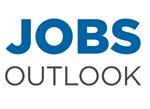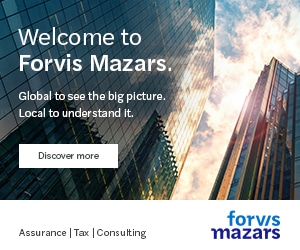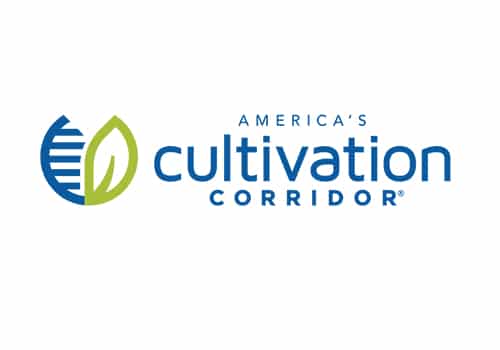Wages, inclusion, placemaking: Panelists discuss challenges facing Iowa’s workforce in 2022

MICHAEL CRUMB Nov 4, 2021 | 4:47 pm
13 min read time
3,114 wordsBusiness Record Insider, Economic Development
There is no one silver-bullet solution to the state’s labor shortage, but if Iowa is to find more workers to fill open positions, the state and its employers are going to have to be creative to attract more people to Iowa, members of a panel said during the Business Record’s 2022 Jobs Outlook discussion on Oct. 14.
Over the past year, Iowa has seen its economy surge forward as it continued to recover from the coronavirus pandemic. Businesses reopened. Events returned. Unemployment dropped, and more and more companies navigated the challenges of establishing their return-to-office plans after more than a year of working remotely. Despite the encouraging signs of a faster-than-expected recovery, uncertainty persists as a large number of people remain unemployed, employers struggle to fill open positions and the state continues to deal with a shortage in its labor force.
The Business Record held a virtual panel discussion to look at what Iowa’s labor market might look like in 2022, and what strategies may be employed as the state continues its recovery from the pandemic.
The discussion, moderated by Business Record Senior Staff Writer Michael Crumb and Business Record Publisher and Executive Editor
Chris Conetzkey, featured six experts:
Almardi Abdalla, vice president of family and workforce programs, Oakridge Neighborhood
Amber Ramirez, Central Iowa Works director, United Way of Central Iowa
Marvin DeJear, senior vice president of talent development, Greater Des Moines Partnership
Kathy Joblinske, market principal, Manpower Iowa
David Surdam, professor of economics at University of Northern Iowa
Dustin Miller, executive director of the Iowa Chamber Alliance
Here are some highlights from the conversation.
How is the Great Resignation affecting employers as they try to fill open positions?
Amber Ramirez: Iowa is consistently one of the states with the highest workforce participation rates. We’re consistently one of the highest states with all parents working. So when we say there are people not working, who are they? Let’s look into that. There’s the retirees. We’ve been talking about it for years that this large generation is now at the age where they can retire and that we’d be in a spot that we’re in now; well, COVID just exasperated that. Employers need to look at that. What are creative ways to pull people back, either based on their interest or their schedule? Parents with the last year … have had to figure out how to take care of their kids and if they have figured out how to stay home and make ends meet, we need to find a way to attract them back. How do we figure out the child care crisis so parents can come back? Youth is another sector we need to look at more. Previously a lot of youths worked, but now a lot of employers don’t look at someone until they’re 18. And on the other side, a lot of parents, teachers, coaches push youth to do extracurricular activities and not get that first job like they did before. We also need to look at the underemployment of our untapped talent.
Dustin Miller: We don’t want any disincentive [to people entering the workforce], and we want people in the workforce. It’s not a one single bullet answer. We’ve worked on a variety of things as far as creating an inclusive environment, addressing child care, finding people who were once Iowans and bringing them back, being a welcoming community to people who were never Iowans or never even U.S. citizens, and giving people that need second chances a second chance, or providing affordable and safe options where a mom or dad who wasn’t in the workforce has the ability to do that. These macro issues have had a pretty major impact. For 10 or so years people were OK poaching from one another … and now it is to the point where everybody is clamoring to say we just need to get everyone in the workforce and then find additional because it’s not in the state to meet our demands.
What strategies can employers use to attract more applicants and retain workers?
Almardi Abdalla: Companies have been creative, but wage is not the only factor, it has to be coupled with a great benefit package. An increase in wage may not be beneficial if there isn’t a great benefit to go with it. It’s what job seekers are looking for. What their priorities are.
Marvin DeJear: It’s around creating a sense of belonging, an inclusive and welcoming environment. The culture of a company is also impactful as far as attracting talent. Creating a flexible package as far as benefits and identifying who you as a company stand for and your beliefs go a long way as far as that talented employee staying with you. Wages are important, it does make a difference, but the retaining part is still about culture, that flexibility in benefits and identifying what you believe in.
Kathy Joblinske: We’re seeing additional time off being offered, that flexibility in the workplace. We have associates who will take less money to have a work-from-home option. I know employers are really struggling with that … but can you offer flexibility? A lot of creativity and partnership with employees on meeting what they’re looking for. The signing bonuses, but also referral bonuses, I’ve seen a big increase in those, helping to attract workers. The additional piece is tapping into different populations and also eliminating or minimizing those pre-screenings upfront.
What is the effect of raising wages on the workforce?
David Surdam: My guess is what we’re seeing is aberrant in the sense it’s a temporary solution. You might opt for bonuses if you sign on and stay for a certain period of time. A bonus doesn’t lock you in. My concern is these high wages may not be sustainable. In World War II when they had an actual cap, that’s how we started getting health insurance by employers, people started providing perks to get people to come in. I suppose they may start to find ways to do this that aren’t cash-driven but make the job more attractive. I’m also concerned if $15 an hour, if that’s the norm, will push out a lot of mom-and-pop operations.
Kathy Joblinske: It depends on the industry and location of the company. If you’re in a rural market and you need to be as competitive as possible to make the drive to the work site competitive. We’ve seen wage increases as a strong tool companies are using. We’ve seen multiple companies increase wages by $2 to $3 an hour. We had a rural client where we had no applicants for months, and as soon as they increased their pay by $2 an hour we were able to see immediate results. We’re still not able to meet the total demand, but there are so many jobs out there you have to stand out, and wages are one way to do that.
Dustin Miller: I don’t think we know yet how this will all shake out, but certainly especially for low-skill, that wage sensitivity is going to make a lot of shifting, at least from what we’re seeing. And I think one of the concerns for the hospitality industry in particular, that wage sensitivity, if someone shifts to a construction job for $1 an hour more and sees more opportunity moving forward, could present some real problems for the job they just left.
Is placemaking the No. 1 job attraction and retention tool?
Dustin Miller: This labor issue, this talent issue, all the numbers related to unemployment, we’re fighting against broader population growth numbers that are very problematic. That is one of the things we’re striving to work on from a public policy standpoint. For years we had workforce development programs as a higher priority in our public policy agenda, but what we’ve said is you can have all the training programs in the world, but if you don’t have a body it’s not really useful. Do [bike trails, water attractions, soccer stadiums and skate parks] drive business every day? No. But it becomes an attractive asset from a placemaking standpoint that certain employees are looking for. They may just not want to work from home, they also might want to get on a bike trail on the weekend, too. It used to be we had a great job and a great benefit package, you should come. But we’ve moved beyond that because of that larger population growth issue. We can’t just get more people that are here into those jobs, we need a new influx of population.
Marvin Dejear: Placemaking has been our No. 1 priority since about 1999. These amenities do draw people to the area. It makes sense to have placemaking as a leading strategy, but we have to make it a welcoming place to come. In the past decade, Des Moines was No. 2 fastest-growing city in the country in the foreign-born population moving to the area, and that has helped us in the needs we have for our workforce. We have to continue to create a welcoming environment where everyone feels they can come to Iowa and have the best life, but we can’t disregard the fact outside of placemaking, people have to also feel that if they come to enjoy all those amenities, that they will be welcome and can enjoy them with their families and have a good time. The welcoming and placemaking strategy go hand-in-hand.
Watch the 2022 JOBS Outlook
Listen to the full discussion at businessrecord.com/video.
Over the past year, Iowa has seen its economy surge forward as it continued to recover from the coronavirus pandemic. Businesses reopened. Events returned. Unemployment dropped, and more and more companies navigated the challenges of establishing their return-to-office plans after more than a year of working remotely. Despite the encouraging signs of a faster-than-expected recovery, uncertainty persists as a large number of people remain unemployed, employers struggle to fill open positions and the state continues to deal with a shortage in its labor force.
The Business Record held a virtual panel discussion to look at what Iowa’s labor market might look like in 2022, and what strategies may be employed as the state continues its recovery from the pandemic.
The discussion, moderated by Business Record Senior Staff Writer Michael Crumb and Business Record Publisher and Executive Editor
Chris Conetzkey, featured six experts:
Almardi Abdalla, vice president of family and workforce programs, Oakridge Neighborhood
Amber Ramirez, Central Iowa Works director, United Way of Central Iowa
Marvin DeJear, senior vice president of talent development, Greater Des Moines Partnership
Kathy Joblinske, market principal, Manpower Iowa
David Surdam, professor of economics at University of Northern Iowa
Dustin Miller, executive director of the Iowa Chamber Alliance
Here are some highlights from the conversation.
How is the Great Resignation affecting employers as they try to fill open positions?
Amber Ramirez: Iowa is consistently one of the states with the highest workforce participation rates. We’re consistently one of the highest states with all parents working. So when we say there are people not working, who are they? Let’s look into that. There’s the retirees. We’ve been talking about it for years that this large generation is now at the age where they can retire and that we’d be in a spot that we’re in now; well, COVID just exasperated that. Employers need to look at that. What are creative ways to pull people back, either based on their interest or their schedule? Parents with the last year … have had to figure out how to take care of their kids and if they have figured out how to stay home and make ends meet, we need to find a way to attract them back. How do we figure out the child care crisis so parents can come back? Youth is another sector we need to look at more. Previously a lot of youths worked, but now a lot of employers don’t look at someone until they’re 18. And on the other side, a lot of parents, teachers, coaches push youth to do extracurricular activities and not get that first job like they did before. We also need to look at the underemployment of our untapped talent.
Dustin Miller: We don’t want any disincentive [to people entering the workforce], and we want people in the workforce. It’s not a one single bullet answer. We’ve worked on a variety of things as far as creating an inclusive environment, addressing child care, finding people who were once Iowans and bringing them back, being a welcoming community to people who were never Iowans or never even U.S. citizens, and giving people that need second chances a second chance, or providing affordable and safe options where a mom or dad who wasn’t in the workforce has the ability to do that. These macro issues have had a pretty major impact. For 10 or so years people were OK poaching from one another … and now it is to the point where everybody is clamoring to say we just need to get everyone in the workforce and then find additional because it’s not in the state to meet our demands.
What strategies can employers use to attract more applicants and retain workers?
Almardi Abdalla: Companies have been creative, but wage is not the only factor, it has to be coupled with a great benefit package. An increase in wage may not be beneficial if there isn’t a great benefit to go with it. It’s what job seekers are looking for. What their priorities are.
Marvin DeJear: It’s around creating a sense of belonging, an inclusive and welcoming environment. The culture of a company is also impactful as far as attracting talent. Creating a flexible package as far as benefits and identifying who you as a company stand for and your beliefs go a long way as far as that talented employee staying with you. Wages are important, it does make a difference, but the retaining part is still about culture, that flexibility in benefits and identifying what you believe in.
Kathy Joblinske: We’re seeing additional time off being offered, that flexibility in the workplace. We have associates who will take less money to have a work-from-home option. I know employers are really struggling with that … but can you offer flexibility? A lot of creativity and partnership with employees on meeting what they’re looking for. The signing bonuses, but also referral bonuses, I’ve seen a big increase in those, helping to attract workers. The additional piece is tapping into different populations and also eliminating or minimizing those pre-screenings upfront.
What is the effect of raising wages on the workforce?
David Surdam: My guess is what we’re seeing is aberrant in the sense it’s a temporary solution. You might opt for bonuses if you sign on and stay for a certain period of time. A bonus doesn’t lock you in. My concern is these high wages may not be sustainable. In World War II when they had an actual cap, that’s how we started getting health insurance by employers, people started providing perks to get people to come in. I suppose they may start to find ways to do this that aren’t cash-driven but make the job more attractive. I’m also concerned if $15 an hour, if that’s the norm, will push out a lot of mom-and-pop operations.
Kathy Joblinske: It depends on the industry and location of the company. If you’re in a rural market and you need to be as competitive as possible to make the drive to the work site competitive. We’ve seen wage increases as a strong tool companies are using. We’ve seen multiple companies increase wages by $2 to $3 an hour. We had a rural client where we had no applicants for months, and as soon as they increased their pay by $2 an hour we were able to see immediate results. We’re still not able to meet the total demand, but there are so many jobs out there you have to stand out, and wages are one way to do that.
Dustin Miller: I don’t think we know yet how this will all shake out, but certainly especially for low-skill, that wage sensitivity is going to make a lot of shifting, at least from what we’re seeing. And I think one of the concerns for the hospitality industry in particular, that wage sensitivity, if someone shifts to a construction job for $1 an hour more and sees more opportunity moving forward, could present some real problems for the job they just left.
Is placemaking the No. 1 job attraction and retention tool?
Dustin Miller: This labor issue, this talent issue, all the numbers related to unemployment, we’re fighting against broader population growth numbers that are very problematic. That is one of the things we’re striving to work on from a public policy standpoint. For years we had workforce development programs as a higher priority in our public policy agenda, but what we’ve said is you can have all the training programs in the world, but if you don’t have a body it’s not really useful. Do [bike trails, water attractions, soccer stadiums and skate parks] drive business every day? No. But it becomes an attractive asset from a placemaking standpoint that certain employees are looking for. They may just not want to work from home, they also might want to get on a bike trail on the weekend, too. It used to be we had a great job and a great benefit package, you should come. But we’ve moved beyond that because of that larger population growth issue. We can’t just get more people that are here into those jobs, we need a new influx of population.
Marvin Dejear: Placemaking has been our No. 1 priority since about 1999. These amenities do draw people to the area. It makes sense to have placemaking as a leading strategy, but we have to make it a welcoming place to come. In the past decade, Des Moines was No. 2 fastest-growing city in the country in the foreign-born population moving to the area, and that has helped us in the needs we have for our workforce. We have to continue to create a welcoming environment where everyone feels they can come to Iowa and have the best life, but we can’t disregard the fact outside of placemaking, people have to also feel that if they come to enjoy all those amenities, that they will be welcome and can enjoy them with their families and have a good time. The welcoming and placemaking strategy go hand-in-hand.
Watch the 2022 JOBS Outlook
Listen to the full discussion at businessrecord.com/video.









